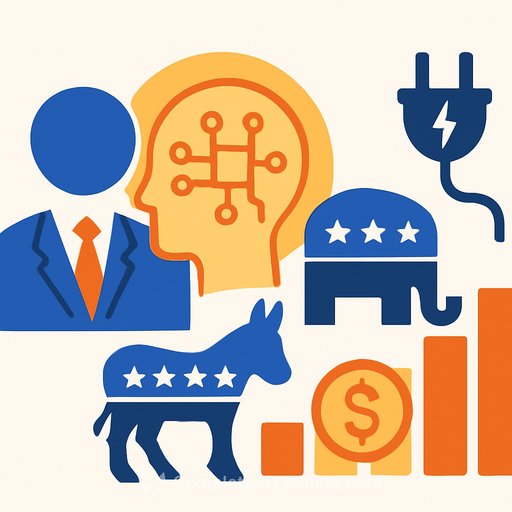SAP Americas' Jared Coyle on AI's role in smarter government
State and local teams are using AI and automation to speed service delivery without sacrificing trust. Jared Coyle, Chief AI Officer for SAP Americas, calls this the "real magic of AI": better efficiency and a better citizen experience at the same time.
One regional government handled nearly 800,000 citizen inquiries during the pandemic with automated assistance. Manual responses dropped from 100% to just 17%. That is the kind of lift every agency wants-fewer backlogs, faster answers, and happier constituents.
From back-office fixes to cross-agency outcomes
Automation started with simple back-office tasks-routing, data entry, case updates. The next phase connects agencies and data so staff can act sooner and with more context.
Think eligibility checks that pull from multiple systems in seconds. Or event-driven alerts that trigger coordinated responses across health, human services, transportation, and public safety.
Grounded automation: policy-first AI that you can audit
Coyle expects "grounded automation" to take hold within five years-automation that fits with federal policy and is safe to deploy across complex workflows. In practice, that means clear rules, traceable outputs, and human oversight where it matters.
- Policy conformance by default (use approved models, approved data, approved use cases).
- Data lineage and model provenance you can show an auditor.
- Human-in-the-loop for sensitive decisions; human-on-the-loop for routine work.
- Privacy and security baked in; least-privilege access; immutable logs.
- Bias testing and service quality monitoring in production, not just in pilots.
High-impact use cases to prioritize
- Grant management: intake, eligibility pre-checks, scoring assistance, and post-award reporting.
- Recruitment: resume triage, skill matching, interview scheduling, and compliance documentation.
- Disaster response: surge intake, automated status updates, damage assessment triage, and resource routing.
- Citizen services: virtual agents for FAQs, forms guidance, and appointment booking with handoff to staff.
- Finance and procurement: duplicate detection, invoice matching, spend insights, and fraud flags.
Start this quarter: a simple plan
- Pick two high-volume interactions where delays create pain (permits, benefits status, payments).
- Set a clear target: reduce manual handling below 25%; cut average response time by 40%.
- Stand up a virtual agent for common questions + RPA for system updates + case management for escalations.
- Design the human handoff: what triggers it, what context staff see, and what gets logged.
- Measure weekly: first-contact resolution, time to resolution, accuracy, CSAT, and audit issues.
- Co-create with labor, privacy, and legal teams early to avoid rework later.
Data and collaboration playbook
- Agree on a shared data model and event standards across agencies.
- Publish APIs for high-value datasets with role-based access and throttling.
- Use a common identity layer for staff and contractors; log every action.
- Stand up MOUs that define what data moves, why, and how it is retained.
- Pilot on one scenario (e.g., disaster claims) before scaling to more programs.
Risk, policy, and trust
Anchor your approach to known standards. The NIST AI Risk Management Framework helps teams plan, measure, and improve risk controls over time. The latest OMB guidance sets expectations for federal use and oversight, which many state and local teams model.
Upskill your workforce
Technology lands. People make it work. Give staff role-based training so they can design prompts, review outputs, and tune workflows without waiting on a vendor for every tweak.
The takeaway
AI is already helping governments answer more questions, faster, with fewer manual touches. Coyle's point is simple: efficiency and service quality can improve together.
Start small, measure hard, and build on wins. Ground your automations in policy and proof, and you'll earn the trust to scale.
Your membership also unlocks:






